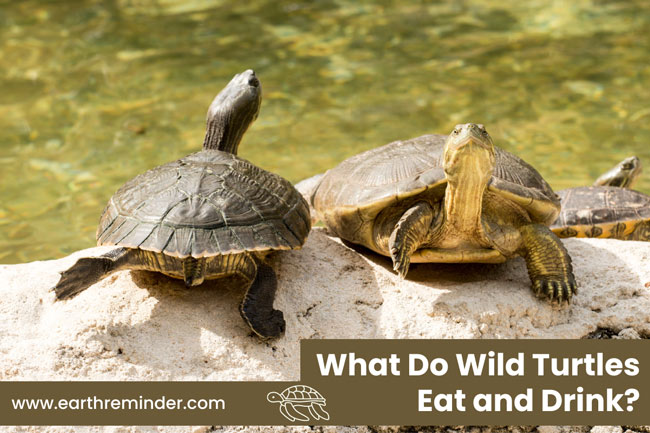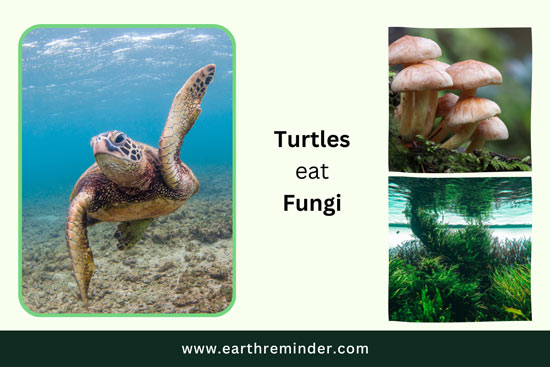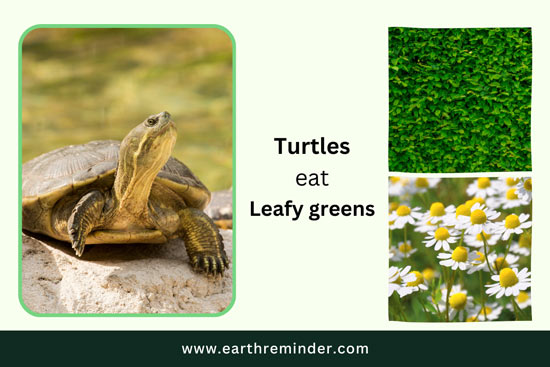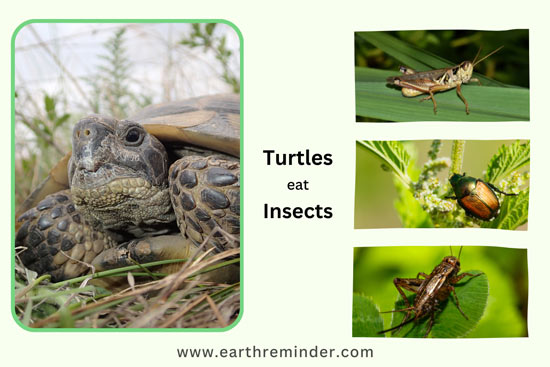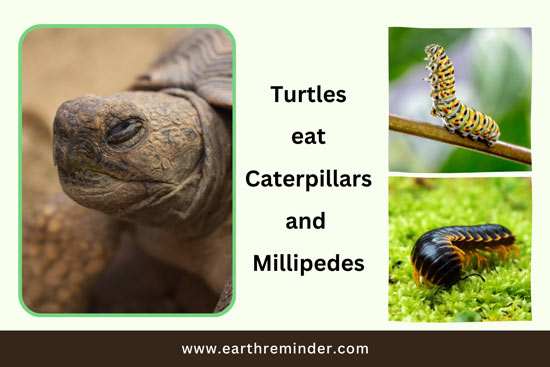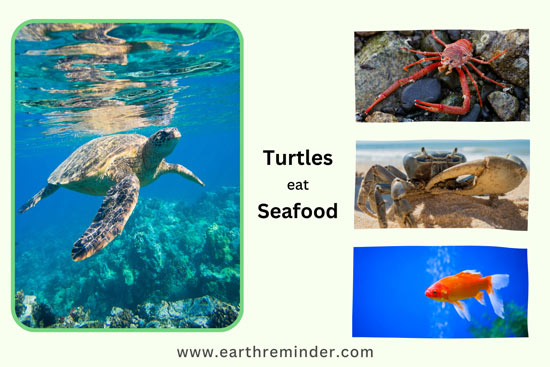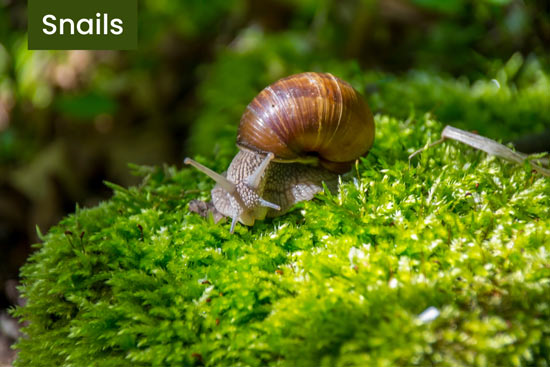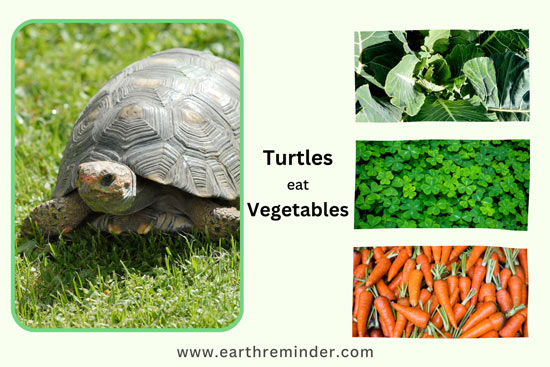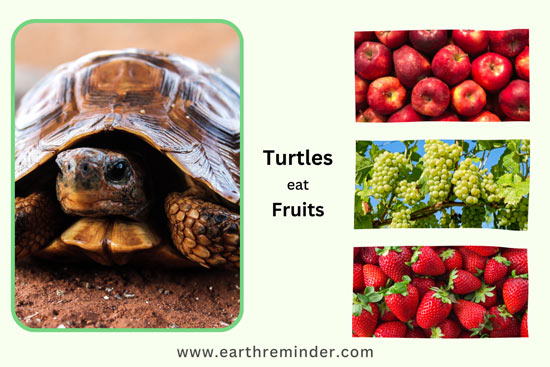What Do Wild Turtles Eat and Drink?
Introduction: What Do Turtles Eat in the Wild?
As one of the longest-living reptiles with a history of over 200 million years, turtles have developed different dietary habits. With so many species existing in the world, eating requirements differ from one to another. An amazing thing about their eating habits is that some of them are carnivores and others fall on the herbivore side. Moreover, their habits tend to change as per their jaws, the places where they live, and the availability of food sources.
Apart from their food habits, they have the ability to hide in times of danger. Though, their hard shell is enough to protect them most of the time; still, they are adept at deceiving their predators. Certainly, they can blend into the natural environment and the predator may not be able to identify them. Besides this fun fact, turtles living in the wild are meant to eat things as per availability.
Table of Contents
Facts Related to Turtles In the Wild
Turtles are representative of soft nature with a hard protective shell. They guard themselves by squishing their bodies into the shell on experiencing danger. Besides this, there are various facts that can be stated.
There are more than 350 species of turtles with hawkbills, leatherback, loggerhead, flatback, Map turtles, snapping turtles, and African side-necked being the most popular ones.
- Turtles cannot leave their shell because it consists of bones and cartilage.
- Turtles can weigh up to a thousand kilograms and grow up to 8 feet tall.
- Leatherback turtles are capable of travelling more than any other breed.
- Turtles have flipper legs that help them swim properly.
- Turtles have adaptable eating habits that make them eat whatever is available.
Also Read: World Turtle Day: History, Celebration and Themes.
What Do Turtles Eat In the Wild?
Ideally, turtles are adaptable to changes and can eat anything that is available to them. But, some of the species have specific eating habits and prefer to eat differently. Indeed, a few of the turtles are carnivores and the others are herbivores in their eating habits. Let’s explore more about what wild turtles eat here:
Fungi
It is one of the most preferred food items for turtles living in seas or ponds. This food tends to give them energy for long swims. Fungi like mushrooms and algae can provide important nutrients like carbohydrates and vitamins to turtles. Turtles can also digest plants with the help of fungi. Although not all turtles eat fungi, it’s an important food source for many.
Leafy Greens
Apart from algae, turtles tend to eat green leaves. These are typically common with herbivore turtles because they prefer to eat such food products in the wild. Wild turtles eat leaves, stems, and flowers from many species of plants.
Small Insects
Another food available for the turtles in wild is small insects. For example, this could be worms, ants, small spiders, grasshoppers, beetles, crickets, or any other insects available around. Usually, smaller turtles stick to smaller prey, while larger turtles can eat larger insects.
Caterpillars and Millipedes
Apart from small insects, turtles in the wild eat caterpillars and millipedes too. Caterpillars are larvae of moths and butterflies, feeding on plant matter on leaves. Caterpillars can be easily caught by turtles by climbing up trees or bushes (yes, they can climb!), or by waiting for them to crawl on the ground.
On the other hand, millipedes are arthropods with long, segmented bodies and multiple legs. Forests are good places to find them because they feed on decaying plants. Millipedes may be bitten or swallowed by turtles. They’re small worms that turtles can eat easily.
Fishes and Seafood
Sea turtles are very active at catching fish and eat smaller fish to feed them. Indeed, it is the best food that adds to their overall health. Turtles will also eat other types of seafood, such as crustaceans, mollusks, shrimp, crabs, etc.
Snails
Being omnivores in nature, turtles tend to eat smaller-sized animals including snails. These animals have soft shells and are easier to swallow for turtles. Turtles can obtain protein from snails.
Vegetables
Other food items that turtles eat in the wild are vegetables like carrots, lettuce, beans, turnips, broccoli, and spinach. In fact, turtles prefer to eat dark green leafy vegetables in the wild such as mustard greens, carrot tops, endive, Swiss chard, parsley, romaine lettuce, collard greens, kale, and clover.
Fruits
A turtle can sometimes also eat apples, strawberries, grapes, raspberries, blueberries, and watermelons. However, fruit should be consumed in moderation due to the potential for health effects, as they contain sugar/sweetness. This is especially for turtles who are in a captive environment.
Also Read: How Does Energy Flow Through an Ecosystem?
What Do Wild Turtles Drink?
In their natural habitat, wild turtles obtain their water from a variety of sources. Turtles drink water from a variety of sources depending on their species, location, and access to resources. Wild turtles obtain water in the following ways:
- Natural Water Sources: Turtles get their water from ponds, lakes, rivers, and streams. Minerals and other essential elements are often found in these bodies of water, which are good for turtles.
- Rainwater: During rainy seasons, turtles may drink water from the surface of rocks or open surfaces. A lot of nutrients are in this water, and it’s usually cleaner.
- Plant dew: Turtles can also get water from plants through dew. When there’s dry weather, this water can be a helpful source of hydration.
- Diet and Food: Turtles get part of their water from their diet. The moisture in insects, fruits, and vegetables may help turtles get water.
In general, turtles get their water from a variety of sources in the wild. When there’s drought or limited water resources, turtles may go thirsty and may have to travel further to find water.
What Turtles Do Not Eat In the Wild?
Though turtles tend to eat most of the things that are available to the in the wild environs. Still, many of them prefer not to eat specific food products such as:
- Dairy products
- Salty food
- Sweets
Other than that wild fish and amphibians can carry parasites and other infectious organisms that can harm turtles. Also, grocery store chicken tends to lack phosphorus and calcium balance, so it should not be given to wild turtles.
Eating Habits of Turtles In the Wild
Turtles have a varied kind of eating habits as they tend to eat whatever is available to them in the wild. Moreover, their preference for food items depends on the kind of jaws they have. Considering the habitat of terrestrial turtles, they are seen mostly in grasslands and woodlands. In fact, these places have slight tropical to temperate environmental conditions. So, these turtles thrive more on vegetation and insects as they live around that place.
Not to forget that terrestrial turtles have an omnivorous nature. This makes them live close to natural biomes. On the other hand, some of the turtle species may be inclined towards herbivorous dietary habits, whereas others tend to consume decaying animals in the wild. Besides this, land turtles do not hunt for food much as they are casual enough to eat whatever is available to them in the environment where they live.
Eating Habits of Sea Turtles In the Wild
When it comes to identifying the eating habits of sea turtles, they have distinct tastes. In fact, adult loggerheads rely on small sea animals such as crabs, fishes, and whelks with some plants for the younger ones. On the other hand, hawksbill prefers to feast on corals as they are termed as a fussy eater of the sea.
Apart from this, Kemp Ridley turtles are hardcore meat eaters with crabs as their favorite food, and Olive Ridley is more like to have a blend of meat as well as sea plants. For them, fish, jellies, and sea cucumbers are their favorite choices.
Indeed, semi-aquatic or aquatic turtles such as painted turtles, red sliders, and pond turtles are omnivores. This means they eat a perfect blend of animal protein as well as vegetables. On the other hand, species like spiny soft-shell turtles are carnivorous in nature and prefer animal protein only.
Ideally, aquatic turtles prefer to eat more protein from animals at a young age and resort to vegetables on getting old. Their diet preferences change as they grow and attain old age.
Also Read: Marine Ecosystem Characteristics and Types.
Final Verdict: Wild Turtles Eating Habits
With so many varieties of turtles present in the wild, most of them are omnivores. By this, it means that they will eat insects, leaves, vegetables, and anything that is available in the wild environment. Turtles are strong reptiles with sturdy shells to protect them and varied forms of jaws.
Their eating habits depend on the kind of environment they are living in. The turtles living in the sea will feed more on fish, plankton, or corals; while, the turtles living in forests will eat green leaves, small insects, and worms.
We hope that this article has enhanced your knowledge of what turtles eat in the wild. In a caring captive environment, you can give wild turtles all the care and nutrition they need for a happy life.
